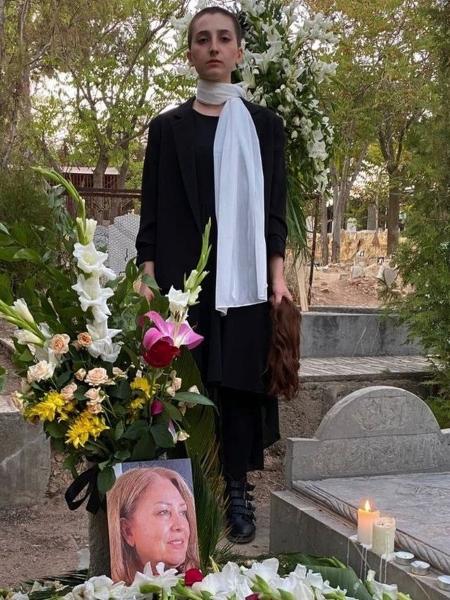The death of 22-year-old Mahsa Amini, who was detained by Iran’s so-called ‘morality police’, sparked a strong protest movement in the country.
16-year-old Nika Shakarami lived in Tehran, the capital of Iran, with her artist aunt Atash. She left home at 5 pm on September 20 to join the biggest protests the country has seen in years.
He brought a towel and a bottle of water to avoid the pepper spray.
In a story he shared on Instagram, his friends saw him burn scarf (Islamic veil) and sang to protest the death of 22-year-old Mahsa Amini, who was detained by the Iranian morality police.
Trying desperately to escape the cops chasing her, Nika’s last call was from a friend. He disappeared for days after that.
- What was life like for women in Iran before the Islamic Revolution?
- Country where men request virginity certificates from women
The family frantically searched for her and were eventually informed by the police of a body matching Nika’s description.
According to the family, they were told that Nika had fallen from a height, and they were shown pictures of what appeared to be staged.
When they were finally taken to Nika’s body, they could only see her face. Although he was beaten and injured, his mother recognized him.
Wasn’t your body delivered to the family? and he was buried the day after his 17th birthday, in the absence of the authorities.
Unofficial sources from Iran’s Revolutionary Guards told Nika’s aunt that she was detained for a week as they tried to get a confession and was sent to Tehran’s notorious Evin prison.
His aunt is in jail now too.
The protests in Iran are in their third week and are in the foreground, with young people and women often shouting in one voice: “zan zendegi azadi“, (“woman, life, freedom”).
The Iranian regime is trying to control the escalation of the situation by blocking the internet to restrict access to social media, and security forces fired live bullets at the protesters.
Amnesty International condemned the rising death toll, calling it “a worrying demonstration of how brutal the authorities’ brutal assault on human life is under the darkness of the internet blockade”.
Like many young people around the world, Hadis Najafi had a lively presence on social media. She loved to sing and dance to Iranian and Western music, including Qveen Herby and Shakira.
On September 21, Hadis, 22, was on her way to a performance in Karaj, not far from Tehran, when she shared a video with her friends. He looked optimistic.
“Hopefully in a few years, looking back, I’ll be happy that everything has changed for the better,” he said.
He was killed an hour later.
Hadis’ mother said in a video she shared on Instagram, “My daughter was killed because of murder. scarfBecause of Mahsa Amini… He went to protest and was killed by bullets, shot in the heart, stomach, neck. When we looked at him, his face and body were bruised.”
Authorities did not allow Hadith’s family to hold a funeral for him. They were asked to tell the family that Hadis died in a car accident or of natural causes.
A few days later, a girl was standing in front of her mother’s grave, her head shaved, her hair in her hands, and her stoic look at the camera. She was the daughter of 55-year-old Iranian Kurdish woman Minou Majidi, who was killed while participating in the September 20 protests.
Minou is enraged by the murder of Mahsa Amini. She felt that she should be part of the performances. And he said, “If people like me don’t go, who will? I’ve lived my life, at least they’re not killing our young people.”
There have been many protests in Iran in recent years, but what sets current events apart is the number of young people, especially girls, at the center of the demonstrations.
In a country that has strict laws on women’s use scarf In public, the defining images of Iran today are students shouting “freedom”, removing their headscarves and showing their hair.
– This text was published at https://www.bbc.com/portuguese/internacional-63142110.
Did you know that the BBC is also on Telegram? subscribe to the channel.
Have you watched our new videos on YouTube?? Subscribe to our channel!
source: Noticias

